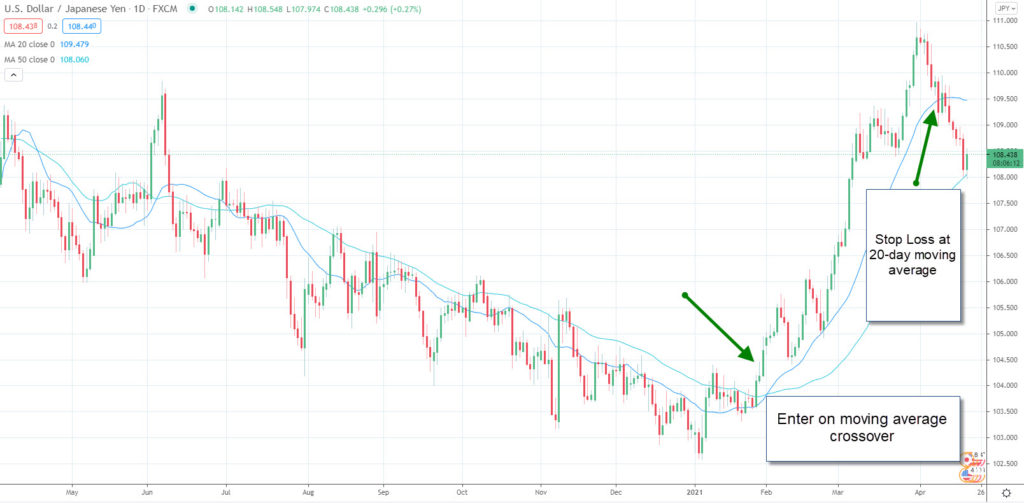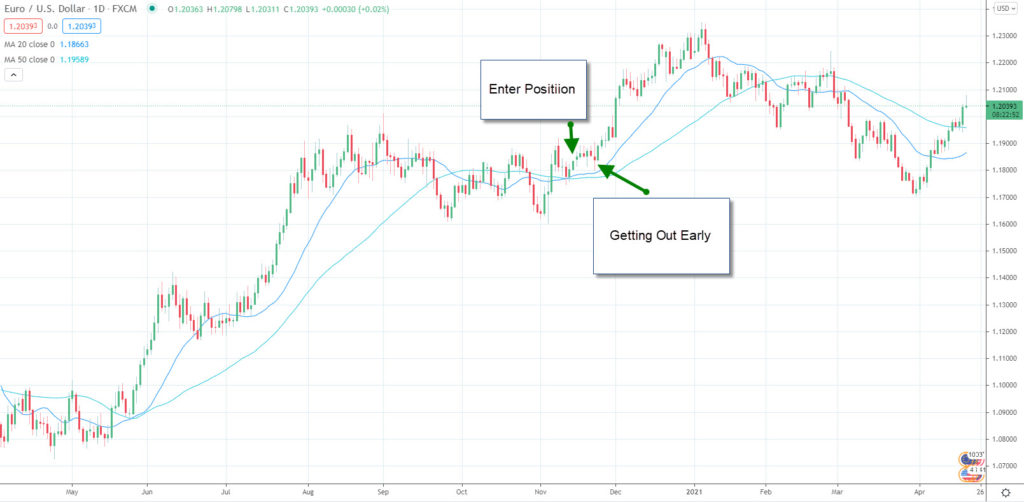Fear is a potent emotion. It can increase your adrenaline and make you feel very uncomfortable. Managing your fears comes with experience. For example, when you are young, there are so many unknowns, and you might be scared of people in costumes, like clowns. As you get older, you learn how to manage these fears.
Investing in the capital markets can be scary because the returns are not guaranteed, and you might experience losses. As a result, you might not get back all the money you invested, and therefore the risks are scary.
Managing Your Emotions
When you read about the different aspects of investing, what is often overlooked is the process of managing your emotions and trading without fear. Investors often think about strategies and risk management, but few think about what it will feel like when you are making or losing money. While it’s challenging for you to replicate these emotions, there are some ways to practice emotion management by either trading with small amounts of capital or even using a demonstration account.
Fear has a close cousin, named greed. While the fear of losing money can be the most powerful emotion you will experience when you are investing, greed can be nearly as powerful and also needs to be managed for you to achieve investing success.
Greed is a desire to increase material gain or social value, such as status or power. In the original movie “Wall Street,” Michael Douglas’s character Gordon Gekko said, “Greed, for the lack of a better word, is good.” Unfortunately, when greed becomes overwhelming, it can create an unbalance and chaos. Greed can be associated with stress and despair—behaviors such as gambling addictions can manifest from greed. Greed preys on FOMO in trading which is the fear of missing out.
Greed and fear play essential roles in the capital markets. The exchange rate of a currency pair will overshoot value levels because market participants become fearful or greedy, pushing a currency pair to an untenable short-term value. A greedy trader can catapult a stock into bull market territory or plunge it into bear market despair.
 How Do Your Emotions Play a Role in Trading?
How Do Your Emotions Play a Role in Trading?
Your emotions play a critical role as they attempt to alter your trading mindset. One of the most complex parts of becoming a successful trader is to learn to keep your emotions in check and avoid fear based trading. Human beings are not machines, and therefore handling risk and potentially losing money can generate trading fear.
One common issue that occurs when fear or greed overwhelm your feelings is the changing of your trading plan. Here are two examples, one about greed based trading and one that shows you how fear can play a role in your trading decision.
The chart below is a candlestick chart of the EUR/USD. The trading strategy for this example is a moving average crossover strategy. On the long side, you enter the EURUSD when the 20-day (simple) moving average crosses above the 50-day (simple) moving average. You stop out when the EUR/USD closes below the 20-day moving average. You reverse your position or short the EUR/USD when the 20-day moving average crosses below the 50-day moving average.
A classic mistake by a novice trader would be to exit the position ahead of time as you start to lose money. When you begin to see losses, fear might drive you to withdraw your trading position early, failing to wait for the market to reach your risk management stop-loss levels.

Greed can also play a pivotal role in your trading mindset as FOMO in markets can potentially lead to a fearful situation. In this example, let’s assume that you are trading using a moving crossover strategy, similar to the one used in the previous chart with the duplicate entry and exit criteria. This moving average crossover trading strategy is geared to catch the trend created by the exchange rate of the USD/JPY.
The first exit criteria occurred when the exchange rate passed through the 20-day moving average. A greedy investor might bypass that risk management criterion looking for a higher exchange rate. If you are not quick to react, you could easily see the exchange rate fall a big figure before reaching the next level of support. This scenario, driven by greed, could cost you a portion of your intended profits.

Developing a Winning Mindset
One of the keys to successful trading is handling the ups and downs of market movements, which might generate fearful and greedy emotions.
To acquire a winning mindset, you need to learn how to handle your emotions. You want to make sure that you understand the market’s noise. Daily swings in price action occur naturally. You want to avoid making split decisions that can alter your trading plan. Your goal is to control both fear and greed, which will allow you to stick to a trading plan that can be successful over time.
Sticking To Your Trading Plan
The most effective way to manage your fear & greed is to create a trading plan that you can stick to during turbulent times. A trading plan is a business plan. It describes how much you plan to make on a trading strategy and how much you are willing to risk to generate those returns. Investing is a process that allows you to generate higher returns with higher levels of risk. If you don’t want to risk any money, the returns you will receive will be minimal and commensurate with your risk.
For example, the generic equity index risk associated with the S&P 500 index produces approximately 8% annualized returns during the past 20-years. During those periods, there were several drawdowns of 20% and more. This situation means that you are likely to face some drawdown unless you buy precisely at the right time, which means you are taking a risk. Alternatively, you could place your money in a government short-term Treasury bill, which provides a very nominal return.
When you create a trading plan, you should determine in advance how much you are willing to risk to generate your returns. If you purchase a Treasury bill, you will not lose money, but you could lose money if you buy the S&P 500 Index. When you design your trading plan, you should remember how much money you are willing to lose if you take on risk.
For example, if you are looking to invest in the S&P 500 index to generate 8% annualized gains, you might initially lose 20% or more if you get in at the wrong time. If you understand that you will lose money on some of your forex trades, you will avoid becoming a fearful trader.
How to Manage Loss Aversion
You can also train yourself to avoid the fear of losing money. If you are scared of losing money, your trading will be hindered by your aversion to loss. Loss aversion happens to all traders at one point or another. You might experience a losing streak or face a loss on your first trade, and before you know it, you are scared to place a trade.
To manage loss aversion correctly, you need to treat trading as a business and understand that losses are part of your business plan. This situation means you need to have a good handle on your trading psychology and what is required to tackle the capital markets properly.
Understanding Loss Aversion Theory
Loss aversion is a psychological theory. It says that people hate losses more than they love gains. For the same amount of loss, say $100, many investors would rather avoid the loss than accept the same profit. This principle is used heavily in economics. Loss aversion is different from risk aversion. Loss aversion is based on previous experiences. Some economic theories say that people hate losses twice as much as they like gains. This theory was initially used in consumer behavior before focusing on investment behavior.
For example, consumers are much more in tune with price increases than price decreases. You are much more likely to stop purchasing a product if the price increases than buying more of the product when the price declines.
Loss aversion is generally followed by loss of attention. This theory refers to the tendency of consumers to allocate more attention to a situation when it involves losses than when it does not involve losses. This scenario means that you will pay much more attention to a price increase that will generate a contraction in your wealth compared to a price decrease which will cause an increase in your wealth.
Loss Aversion in Trading
The loss aversion of investment theory says that traders are more likely to become apprehensive following a loss than to become aggressive when they experience gains. This scenario tells investors that a $100 loss is more valuable than a $100 gain. Since this is part of the psychological makeup of most human beings, there is a need for a re-training of your brain to understand that the two are equal. It also means that traders will pay more attention to losing positions or prior losses than they will pay to winning trades. This characteristic also means that you are more likely to submit to fear than to become overly greedy.
How Does Loss Aversion Occur?
Since most people are hard-wired to avoid losses more than to accept gains, loss aversion happens naturally. Of course, you need to experience a loss of some sort to understand the feeling of losing money. Most novice investors have only experienced some gains.
For example, when you start to work, you only experience getting paid. Your employer might pay you a fixed fee or an hourly rate, but you only experience making money. Very few go to work, and if they do a poor job on a specific day, they don’t get paid or, even worse, owe their employer money.
Since losing money is not a concept ingrained in your behavior, your first investing experience might be the first time you experience a loss. Since you know how hard it is and how much time you had to work to make money, the fear associated with losing money on a trade far outways the concept of generating income.
Loss aversion can come on for several reasons. You could be a novice trader and not expect losses. You could experience a more significant loss than you anticipated. You could go through a losing streak that you did not forecast.
How Do You Handle the Fear of Losses
The first step in handling loss aversion is understanding and accepting that losses are part of your investing plan. You need to expect losses and treat them precisely like gains. Losses will make up a specific percentage of your trading. You need to spend more time and attention on your losses if they make up a more significant percentage than you anticipate.
The next step is to create a concrete trading plan. If your trading strategy is discretionary, you should have a risk management plan with a solid risk-reward profile. It would be best if you never placed a trade without thinking about exactly how much you plan to risk on each trade and what your potential loss could be. If you trade by gut feel and don’t have a risk management plan, you are setting yourself up for loss aversion.
Experience is the best way to overcome loss aversion. If you see that you are quick to take losses to avoid significant losses or take profit quickly to prevent any loss, you need to take a step back and examine your trading plan and your investment psyche.
You might consider two different ways to practice handling fear associated with losses. The first is to open an account and risk a small amount of capital. Even though the losses will not be painful financially, you will likely feel the same way about your losses. It’s somewhat like getting a vaccine. You are training your brain and body to experience the virus of losses and build up immunity to the fear associated with failures.
An alternative is to paper trade, where you don’t risk any real capital or use your broker’s demo account. A demo account generally provides you with demo money which is not real capital. You will still be able to see your profits and losses, but the capital will be fake. While not the same as risking real money, the demo account will help you experience some of the emotions associated with real gains and losses.
The Bottom Line
Fear and greed are compelling emotions. They play an essential role in driving the movements of the capital markets. Bull markets often get overextended by greed and fear as prices climb a “wall of worry” Bear markets can become overextended as fear drives uncontrollable selling. The emotional aspect of trading is often overlooked as investors begin to trade.
Managing your emotions is a critical part of trading the capital markets. It’s helpful to understand the concept sooner in your trading career. The sooner you know how fear and greed can impact your investing, the quicker you can address the issues that arise from fearful or greedy trading. While both fear and desire can generate negative actions, it’s fear that will lead to loss-aversion.
Loss aversion is the fear of losing, which more than offsets the joy of winning. A losing streak can bring on loss aversion. To manage loss aversion correctly, you need to treat trading as a business and understand that losses are part of your business plan. This scenario means you need to have a good handle on trading psychology and what is required to tackle the capital markets properly.
The most efficient way to handle the emotional aspect of investing is to create a trading plan. A trading plan is like a business plan where you describe the amount of money you are willing to risk to generate your financial goals. You can do this at the portfolio level and the trade level. Your goal is to take the emotion out of your trading activities by determining in advance what you expect.
Since you will not expect all trades to be profitable, when a position moves against you, you will understand that the movement is just part of doing business. A trading plan will help you avoid getting greedy when a trading position moves in your favor, and it will allow you to avoid becoming fearful when a trading position moves against you.
To mimic the feeling that you will likely experience when you start investing, you should consider using a small amount of capital to garner the experience. You might also consider setting up a demonstration account. In conjunction with a trading plan, these two techniques will help you avoid many of the common mistakes that traders make when fear and greed invade your trading psychology.